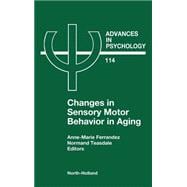
What is included with this book?
| Age-related slowing in movement parameterization studies: Not what you think | |
| Control of simple arm movements in the elderly | |
| Slowness, variability, and modulations of gait in healthy elderly | |
| Aging and coordination from the dynamic pattern perspective | |
| Posture control and muscle proprioception in the elderly | |
| Posture and gait in healthy elderly individuals and survivors of stroke | |
| Tests in rodents for assessing sensorimotor performance during aging | |
| Attentional demands for walking: Age-related changes | |
| Visual control of obstacle avoidance during locomotion: Strategies in young children, young and older adults | |
| Constraints on prehension: A framework for studying the effects of aging | |
| Age, perceived health, and specific and nonspecific measures of processing speed | |
| Table of Contents provided by Publisher. All Rights Reserved. |
The New copy of this book will include any supplemental materials advertised. Please check the title of the book to determine if it should include any access cards, study guides, lab manuals, CDs, etc.
The Used, Rental and eBook copies of this book are not guaranteed to include any supplemental materials. Typically, only the book itself is included. This is true even if the title states it includes any access cards, study guides, lab manuals, CDs, etc.